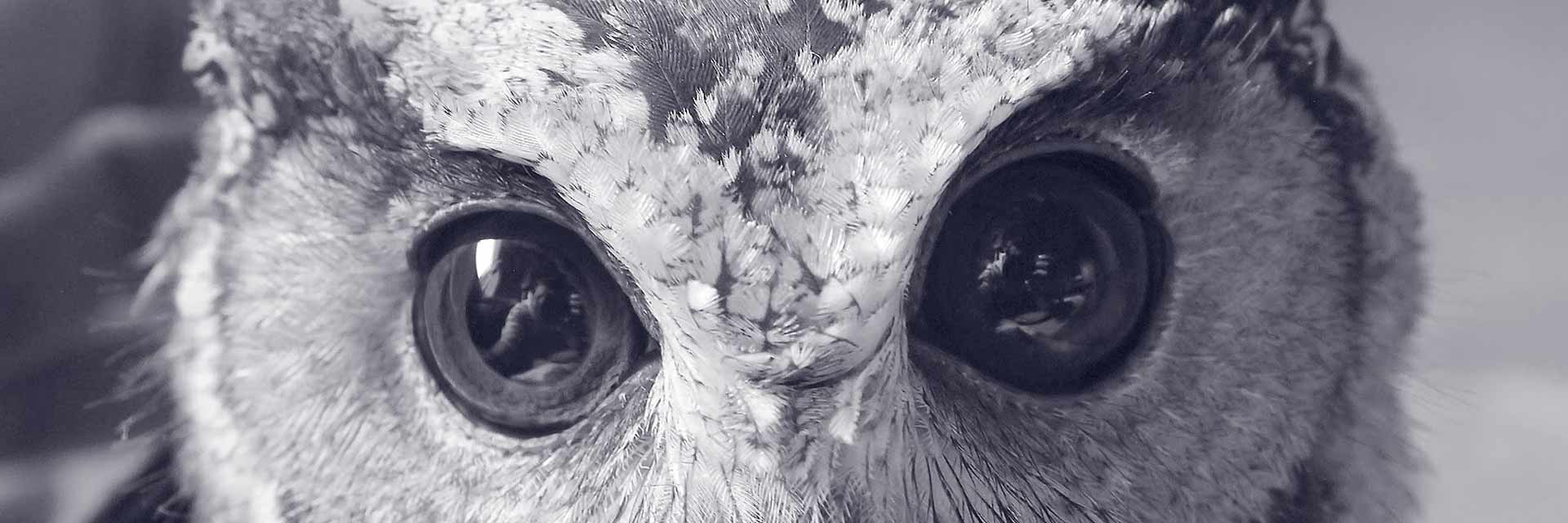
The Threatened Biodiversity of Fascinating Kutch
One evening in late November 2015, the early winter sun was sinking towards the horizon. Grey Francolins were merrily calling from the distant corners of the vast flat and dry landscape. Birds characteristic of the arid region of Kutch such as Greater short-toed lark, Rufous-tailed Lark, Bimaculated Lark and the Common Stonechat flew away on our approach.
Our group included eminent people; prominent among them was A. R. Rahmani, devoted to the conservation of Great Indian Bustard, one of the most critically endangered bird species in the world. Its total population may be just 100-150 birds, largely confined to India. In Pakistan where hunting is much more rampant the status of the bird is expected to be very critical. We were in the Kunathia grasslands, which along with Naliya grasslands, one of the wintering habitats of bustards, were reported to have a maximum of about 30 bustards, the main population in Gujarat.
There was immense excitement in our group as we were rewarded with the sighting of two male birds, which maintained a distance of about 500 m. For me this was my first sighting of this rare bird in the wild. Being tall and large (adult males can grow little over one metre in height and can weigh close to 15 kg) with whitish neck and under parts with narrow black breast-band, they were conspicuous above the scrub vegetation of stunted bushes and grasses.
Although we were 500 m away, they were moving away from us and their movement with an erect posture was elegant. I wondered how such a large bird could get enough to eat in a land which was dry and desolate. The only species in the landscape, which had fruits that were eaten by the bustard, was wild jujube (Zizyphus numularia). Solanum plants (may be Solanum incanum) with yellow fruits were abundant but the bustards are not reported to feed on these fruits.
We made two more trips to the bustard area even visiting the Naliya grasslands. However, they were seen only in Kunathia grasslands. One morning the two males were sighted again, but in the evening only one bird was seen. In the morning, the birds were feeding on the fruits wild jujube, moving from bush to bush. One bird caught a Lesser Agama (Brachysura minor, which is nothing but a dwarf calotes Calotes minor) and swallowed it. In the evening the solitary bird was seen catching and feeding on a large black scorpion possibly belonging to the genus Heterometrus. Even with the basic knowledge acquired during this trip I could understand the conservation problems faced by this species, which lays only one egg on the ground, which needs to be incubated by the female for a period of a little over three weeks.
The chicks are sand-coloured with dark spots. They leave the nest soon after hatching. They are incapable of flight for several weeks and are cared for only by the female. Some of the acute problems faced by the species are grazing by hundreds of sheep, goat and cattle, which can accidentally damage the egg, and farming activities which involve harvesting and ploughing the land even with a tractor, which can disturb the feeding and incubating birds. Ploughing the land with tractor removes the vegetation and leaves the earth in large lumps. The bustard may find it difficult to even to walk across such ploughed land.
In addition the nearly helpless chick may be endangered by the terrestrial predators such as mongoose, jungle cat, jackal and free ranging dogs which are common throughout the country and aerial predators. Several species of birds of prey such as the Tawny Eagle, Steppe Eagle, Eastern Imperial Eagle and Short-toed Snake Eagle hunt in the Kutch landscape.
In the Kunathia grasslands, in some locations I noticed profuse regeneration of desert date (Balanites aegyptiaca) growing into large bushes. The bustard being wary of predators avoids such dense habitats where visibility would be restricted. Interestingly, bustards are reported to feed on the large fruits of desert date and regurgitate the large stony seeds as is done by ungulates (In Rollapadu Wildlife Sanctuary in Andhra Pradesh bustards are known to feed on the fruits of Indian mulberry, Morinda tinctoria).
Therefore even with rudimentary knowledge one can easily visualize an ideal bustard foraging habitat as a vast short grass habitat sprinkled with fruit yielding bushes such as, B. aegptiaca, M. tinctoria and Z. numularia. Bustard females are reported to prefer pure grasslands for breeding and the above mentioned predators can be a threat to both the adults and the chicks. To compound the problems of bustard conservation, these birds are wide-ranging, which means they cannot be confined within a protected area. Therefore it appears that even in a state like Gujarat, which takes pride in saving the lions as a showpiece for its conservation efforts, the bustard will have difficulty in securing a secure home for its long- term survival.
Our visit to Kutch was at the invitation of the renowned conservationist Dilip Khatau, Chairman of The Corbett Foundation, based in Mumbai. Being a proud kutchi by birth, Dilip started the Kutch Ecological Research Centre, a division of The Corbett Foundation, with its office in Tera, one of the ancient villages in Kutch. The research centre has been functional since 1999.
The idea behind this laudable effort is to support local communities and to involve them in conservation. The ongoing notable endeavours are the Rural Medical Outreach Programme along with the Cattle Care and Breed Improvement Programme to cover around 100 villages in the Abdasa and Nakhatrana talukas, special campaigns to save the Great Indian Bustard, anti-rabies and spay-neuter programme for stray dogs in selected villages and promotion of alternative medication to diclofenac sodium, which has caused enormous mortality and decline in the population of vultures in India as well as in the neighbouring countries. Kutch is reported to have less than 200 white-rumped vultures and a small population of Indian Vultures in Kala Dungar (black hills).
Kutch district, spread over an area of 45,652 sq. km., is the largest district in India. Kutch is more an island as it is bound by the Arabian Sea to the south and west and the unique large Rann (meaning ‘salt marsh’), (divided into the Great Rann and Little Rann) to the north and east. During a good monsoon, the Rann, which forms 45 percent of the total area of Kutch, is inundated with 0.5-1.5 m deep brackish water resulting in a vast tract of salt as the dry season advances.
This is the largest salt desert in the world and now has the new name ‘White Rann’ – a desert without sand but only endless stretches of salt and salt- stone. In fact it looks like an extensive snow field—an alluring sight. Therefore a large number of tourists come and see this ‘snow field’ in Kutch particularly on full-moon nights. Although there are numerous places to visit in Kutch, as wildlifers we largely confined ourselves to key wildlife areas and although in five days we drove about 900 km, we could visit only a few places in Kutch.
On the first morning, guided by Devesh Gadhvi, Deputy Director of Kutch Ecological Research Centre, we walked around the fields in Fulay village trying to glimpse the rare Grey hypocolius (Hypocolius ampelinus), which is a winter visitor in South Pakistan and Gujarat. Being related to the bulbuls its primary food is fruit and it is said to feed on the fruits of peelu (Salvadora persica) a common small tree species in Kutch. We did not see a single hypocolius and this was because fruiting of S. persica had not yet begun. Nevertheless the Desert Gerbils were seen and when watched from a distance, in some active burrows gerbils were seen coming out and going in. Gerbils are important prey for many species of predators, both avian and terrestrial.
Another place we visited that day was the 2497 sq.km Banni grasslands, which lie between the Rann and the mainland Kutch, and home to numerous species of animals such as the Indian fox, desert fox, jackal and desert cat. Wolves, striped hyenas and caracal are reported to be found here. The wolf is reported to losing its ground in its conflict with graziers. On the way to Banni grasslands, we saw the Kiro hill, an extinct volcano. On the extensive saline flats there were hundreds of common cranes feeding on the rhizome of the sedge Cyperus arenarius. The fertile land of the Banni grassland owes its existence to the River Indus that deposited sediments when it flowed through this part of Kutch thousands of years ago.
We saw a large number of camels passing through the grassland and the main plant they consumed was S. persica. The local camel breed is called kharai and the ship of the Rann. An amazing fact about this breed is that it is reported to swim three kilometers into the sea to feed on the mangroves on the islands! Our visit to Banni grasslands came to a close after seeing the largest saline-fresh water body in Kutch, – Chharidhandh (chhari means salt affected and dhandhi shallow lake) – a paradise for bird watchers as it is thronged by a multitude of birds both resident and migratory. What amazed me was the ability of the migratory pastoral communities, Rabaris, Jatt and Mutwa, to eke out a living in that harsh landscape maintaining camels and herding hardy local banni buffaloes, for milk which is sold in the nearby villages. While returning the milk men bring provisions including water for drinking. The tough buffaloes survive and yield milk by foraging on the scanty and coarse vegetation and drinking the saline water from the lake.
While travelling to Lakhpat fort built in the 18th century, along State Highway 42, we crossed the much-tampered Narayan Sarovar Chinkara Sanctuary. When the sanctuary was notified in 1981 it was an area of 765.79 sq. km, supported a large population of chinkara. Then this beautiful landscape of hills and valleys dominated by Acacia arabica- A.leucophloea- A.senegal- and Euphorbia nivulia woodland should have had many leopards. Thereafter the discovery of limestone, lignite and bauxite deposits in the sanctuary area made the Gujarat government, against the wishes of the conservation community; denotify parts of the sanctuary, reducing its area to 444.23 sq. km. Even this area is beset with problems of mining and associated disturbances.
Biotic pressures from the 30 or so villages inside the sanctuary are high. Speeding vehicles going along the highway to Lakhpat have killed and continue to kill wild animals and the once abundant chinkara, for which the sanctuary was famous, has been reduced to a small population.
Before visiting Lakhpat fort, we went for a walk to the only land-locked mangrove patch in the world on the community land of Guneri village between Lakhpat and Guneri. According to H.S. Singh, a retired forest officer and an authority on Gujarat landscapes and wildlife, the earthquake of 1819 would have led to major geological changes in the area resulting in the isolation of this mangrove patch and now the nearest seashore is 50 km away! The only mangrove species found in this patch is Avicennia marina and although the patch is 6 ha in size, high tree density is reported only from an area of one hectare. The trail to the mangrove patch was saline and slippery. But the wetness of the soil gave us ample opportunity to observe the tracks of various animals – gerbils, hare, porcupine, chinkara, nilgai, foxes, jackal and hyena—all of which survive in and around the mangrove patch.
Later while standing on a view point on the Lakhpat fort wall overlooking the Kori creek, a disputed area between India and Pakistan, I found it difficult to imagine that this desolate area once was a rice growing area and till the Indus river flowed across this area, there was a prosperous harbour bringing in and taking out goods across the Arabian sea. The earthquake changed the course of the river forcing it flow 200 km north-west of the earlier location, now through Pakistan.
Worthwhile monuments to be seen within the almost deserted fort now are the gurudwara built in the memory of Gunrunanak Sahibji who visited Lakhpat in the 1500s and the Ghosh Mohammad Kuba (grave) built in the memory of the holy man revered both by Muslims and Hindus. The gurudwara was kept extremely clean and I wished that all places of worship in the country would be as clean as this one! There is a pond in front of the Kuba and according to the legend the water in the pond was blessed by Gosh Mohammad. The belief therefore is that people with skin problems who bathe in the pond will be cured. Sadly the pond is not managed well as some people after taking bath had discarded their old clothes, which was an eyesore and made the place look filthy.
The moon was nearly full, the breeze was cool and guided by Dushyantsinh Jhala working with Kutch Ecological Research Centre, and Lalsingh Negi, his assistant, and Nirmal Ghosh, one of the trustees of the Corbett Foundation, we silently approached a hyena den. A Eurasian thick-knee gave an alarm call and flew away but we were rewarded with a sighting of a hyena. Later as we waited near a large mesquite (Prosopis juliflora) bush we heard the yapping alarm call of a hyena from behind the bush. It had come to the den but as it came from behind us it had smelt us, gave an alarm call and ran away. That night we went for a 35 km drive and before returning to Tera we saw five hares, one porcupine and four nilgai near a water hole in a river bed. Early in the morning several groups of jackal howled around Tera as I got ready to leave Kutch.
Anyone with long familiarity with Kutch would only lament about the decline in the glory of this large district as indicated by the waning in the abundance of species such as chinkara, nilgai, leopard, wolf and the Great Indian Bustard. Divyabhanusinh Chavda, an authority on lions and cheetah, opines that lions were reported from Kutch, but not the cheetah. He believes that whatever references there are on cheetah, could be because of the mistaken identity with leopard. Ranjitsinh, eminent wildlifer, concurs with this observation.
Although we had driven nearly 900 km we had seen only nine chinkara and six nilgai (including four at night) and one grey mongoose. Every one familiar with Kutch is aware that one of the greatest threats to the district is the spreading of exotic Prosopis juliflora. In order to control this weed, the Government promoted charcoal making with P. juliflora wood. But corruption crept in and the unscrupulous contractors not only removed P. juliflora but also other valuable species such as S. persica and A. senegal for charcoal making. Possibly these species are much easier to cut than P. juliflora. This forced the Government to withdraw permission for charcoal making. So the problem of Prosopis spread remains uncontrolled and is a huge threat to this arid landscape, as gradually large tracts of the native flora will be replaced by this aggressive weed. Besides the control of illegal wildlife trade, maintenance of habitat quality is extremely essential for the long-term survival of wildlife. Understandably and fortunately, as Kutch is arid and has a large saline area, it cannot support a high human population density (46 people/ sq.km as per 2011 census). But the district is reported to produce 75 per cent of the total minerals of Gujarat and can therefore experience serious problems related to mining. The mining problem, land-polluting industries and the spread of P. juliflora would therefore need the foremost and urgent attention of the Government.
Dr. A.J.T. Johnsingh, Scientific Advisor, The Corbett Foundation
Also associated with Nature Conservation Foundation, Mysore and WWF-India.





2 Comments